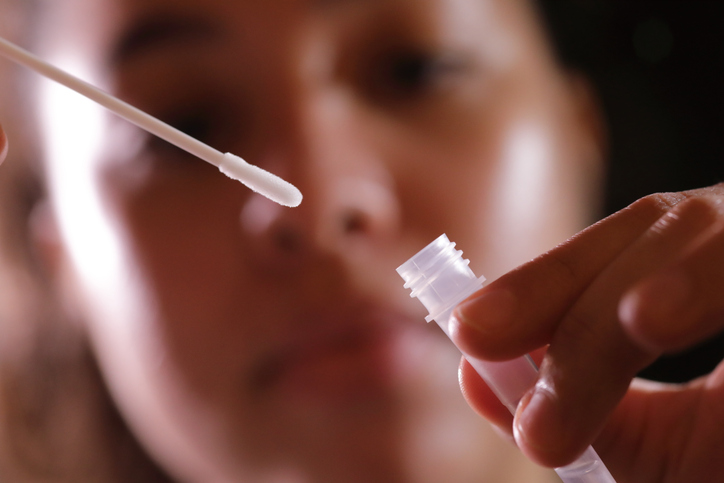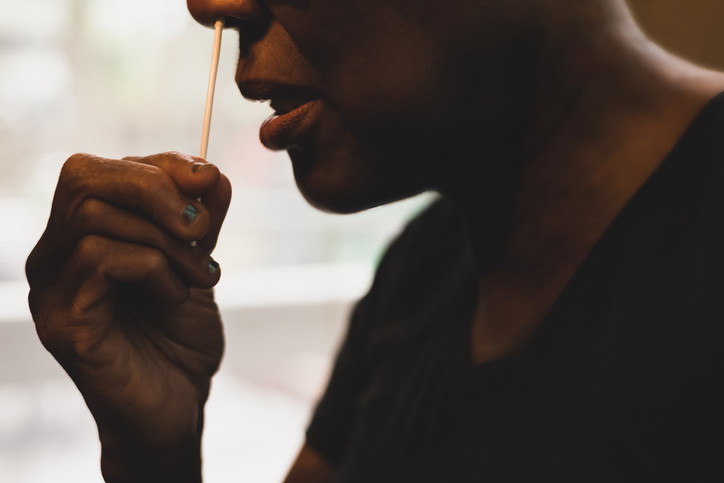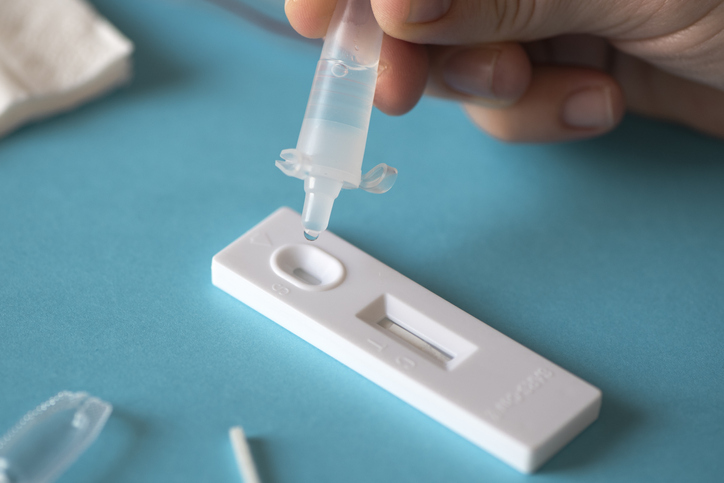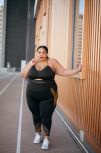Is Your COVID-19 Self-Test Results Accurate?
A Nose And Throat Swab May Yield More Accurate COVID-19 Self-Tests
Share the post
Share this link via
Or copy link

Source: Peter Cade / Getty
Taking COVID-19 tests is much more convenient these days. In fact, The U.S. Postal Service has delivered roughly 350 million at-home tests, says the American Hospital Association. We make major decisions based on the results of these tests – decisions like, whether or not to join that group for the weekend ski trip or whether or not to visit an elderly relative. These small at-home kits have a big responsibility. Unfortunately, an alarming number of them aren’t accurate.
Dr. Eric Feigl-Ding, the co-founder of the World Health Network (WHN), shared an eye-opening photo on Twitter of several at-home tests he took, all while sick with COVID-19. The images revealed what many experts have been claiming for some time: a combination nose and throat swab is far more accurate than a nose-only or throat-only swab. The only test that detected the virus in Dr. Eric Feigl-Ding was the combined throat and nose swab. In fact, these tests detect over 20 percent more cases of COVID-19 that nose-only or throat-only swabs. As we move into a spike season for COVID-19 cases, it’s important that people understand the best practices for taking a COVID-19 self-test that includes both nose and throat swabs.
Prep For Your At-Home Test
Before beginning your test, clean your hands thoroughly with soap and water for 20 seconds. Be sure to clean your wrists, palms, fingers and the tops of your hands as these might all interact with the swab.
Love MadameNoire? Get more! Join the MadameNoire Newsletter
We care about your data. See our privacy policy.
You should also clean the surface where you’ll be setting your kit down to prevent any contamination. Because you’ll need to look inside your mouth when performing the mouth and throat swab, it’s important to choose a location in front of a mirror.
Don’t open the packet containing your swab until you are ready to perform the test. When you do open it, be sure to only grab the stick portion and do not touch the soft side.
How To Take A Throat + Mouth Sample
The same swab will be used for your throat, mouth and nose, but it is very important that you begin with the throat and mouth. Do not begin with the nose, as this can spread bacteria.
Stand in front of the mirror and open your mouth wide. Using the soft tip of the swab, swipe it across the back of your throat. If you stick your tongue out, you’ll see a clear arch at the back of your throat. Swipe the sides of the arches, where the tonsils protrude. Try to avoid touching your teeth or tongue with the swab.
Dr. Eric Feigl-Ding additionally recommends doing a swab across the cheeks and holding it there for an extended period of time (10 seconds).
How To Take A Nose Sample

Source: Catherine McQueen / Getty
Once you are done taking your throat and mouth sample for your COVID-19 self-test, move on to your nostrils. There is no need to insert the swab very far or apply much pressure. But do gently swipe it around the nostril at least four times, or for a total of 15 seconds. Repeat this in the other nostril.
After Taking Your Sample

Source: Emilija Manevska / Getty
Once you have taken your samples, put the swab – soft tip first – inside of the tube you were provided containing liquid. Break the top portion off at the designated break line, and screw the cap onto the tube. Do not put your swab down or let it touch anything before putting it in the tube. Simply put it in the tube the moment you’re done taking your sample.
Tap the bottom of the tube a few times on a surface, and then squeeze the sides of it, extracting as much of your sample from the soft tip as possible, so that it mixes with the fluid. Swirl it around, then put the designated number of drops on the actual test. Wash your hands as soon as this is done.
If you test negative but have been in contact with someone with COVID-19, it is recommended to self-isolate, and re-test in 48 hours. If you test positive and have symptoms, the current CDC guidelines recommend isolating for at least five days.
RELATED CONTENT: New Study Finds Women May Experience Irregular Menstrual Cycle After COVID-19 Vaccination
-

My Husband And I Attempted To Have A Creative Date Night At Home -Without A Babysitter - Here's How It Went
-

She Tried It: Ivy Park Drip 2 and 2.2 Black Pack
-

Vontélle Eyewear Founders Score History-Making Licensing Deal With Paramount
-

Our Health, Our Power: Debunking Myths And Taking Charge This Open Enrollment



